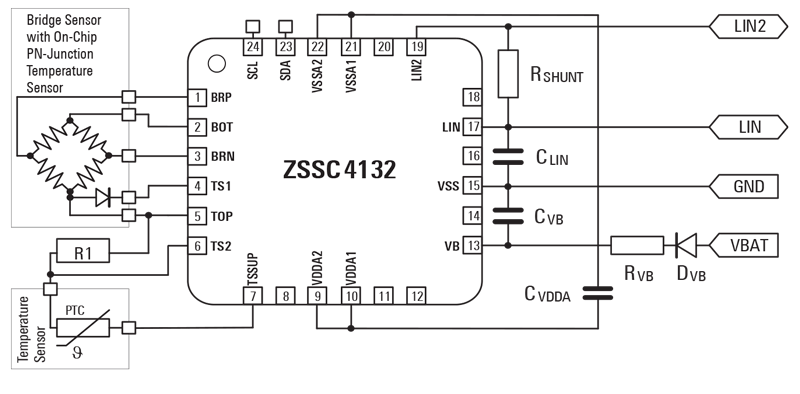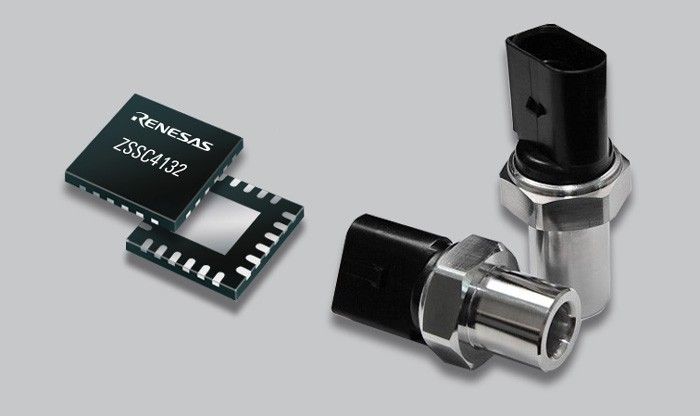There has been continuous innovation in climate control technology and it will continue to rise in the future as new technologies are introduced. While vehicle air conditioners provide a comfortable ride to the passengers, they also play a key role in terms of safety. In addition to keeping the driver comfortable and alert, the air conditioner also dehumidifies the cabin air and prevents windows from fogging up.
While these are all important features of vehicle air conditioners, it is important to note that electronic vehicles (EVs) have a limited energy storage capacity, and HVAC may consume a substantial amount of the total energy stored, considerably reducing the vehicle range, which is one of the most important parameters for EV acceptability. Therefore, maintaining low power consumption of the HVAC is essential.
This means the control unit itself must consume as little power as possible while still providing efficient control of the HVAC for comfort and safety.
Time for Semiconductor Engineers to Look at System Solutions
The communication interface is one of the key parameters for control. Vehicle systems that are modular, such as HVAC systems, do not need high-speed data transfers, and the communication is rather predictable. Therefore, HVAC systems are prime candidates for the Local Interconnect Network (LIN) interface. LIN addresses one of the most significant challenges: robust and reliable communication of networked nodes under harsh automotive conditions. Despite low speed and low bandwidth, it is a single-master multi-slave bus that communicates via a single wire. This reduces wiring complexity, weight, and costs while offering the required communication efficiency that allows accurate sensing and sophisticated control of the HVAC.
Low power consumption is the other challenge. One parameter is the low power consumption of the IC itself, as it also needs to support temperatures defined by the AEC-Q100 standard. Therefore, it is important to choose the appropriate semiconductor technologies. Another important design consideration is improving the system solution by enhancing the level of integration. With advanced know-how and technical capabilities, it becomes possible to reduce the number of external components needed for calibration and communication, which saves space on top of the lowered power consumption.
Renesas has taken these design challenges into account when developing its next-generation automotive sensor signal conditioners (SSCs), the ZSSC4132. These devices give system designers the confidence to select a solution that can provide accurate and reliable pressure and temperature measurements and robust data transmission to the (master) electronic control unit (ECU) of the host vehicle.
Accurate and Reliable Measurements and Robust Data Transmission Features
One of the key features of the ZSSC4132 SSC IC is to measure pressure and temperature values via sensing elements, which are critical for HVAC applications in PHEV and BEV vehicular platforms. The SSC also transmits data via a LIN interface (according to the LIN specification package 2.2A), and has backward compatibility down to LIN 1.3. The LIN interface enables the transmission of sensor data as well as the transmission of supplementary data. The ZSSC4132 is not only cost-effective but also provides robust and reliable data connectivity between the HVAC system and an ECU, even in harsh vehicle environments.
The LIN transceiver device, integrated into the ZSSC4132, uses slave node position detection (SNPD) at the LIN bus. For example, the LIN slave addresses are assigned by the LIN master (ECU in this case) after it is connected to all the slaves of the LIN bus. This approach saves additional costs since slave address preprogramming is not needed.
In addition to the operation in the vehicle, the ZSSC4132 lowers costs during production. This cost reduction occurs during end-of-life (EOL) calibration, which results in about 30% calibration time savings compared to competitive products.
The ZSSC4132 works with differential bridge sensor input and on-chip or external temperature sensors, which the customer can choose for conditioning of sensor input signal and/or temperature output. It offers digital compensation of offset, gain, higher order nonlinearity, as well as temperature coefficients of the measured bridge sensor input signal.


Application Circuit and External Components
The ZSSC4132 chip is optimized to withstand harsh automotive environments, requires low supply currents to reduce power consumption, and provides excellent electromagnetic compatibilities and electrostatic discharge (ESD) protection.
Visit the ZSSC4132 product page for more information about Renesas’ newest automotive SSCs.



